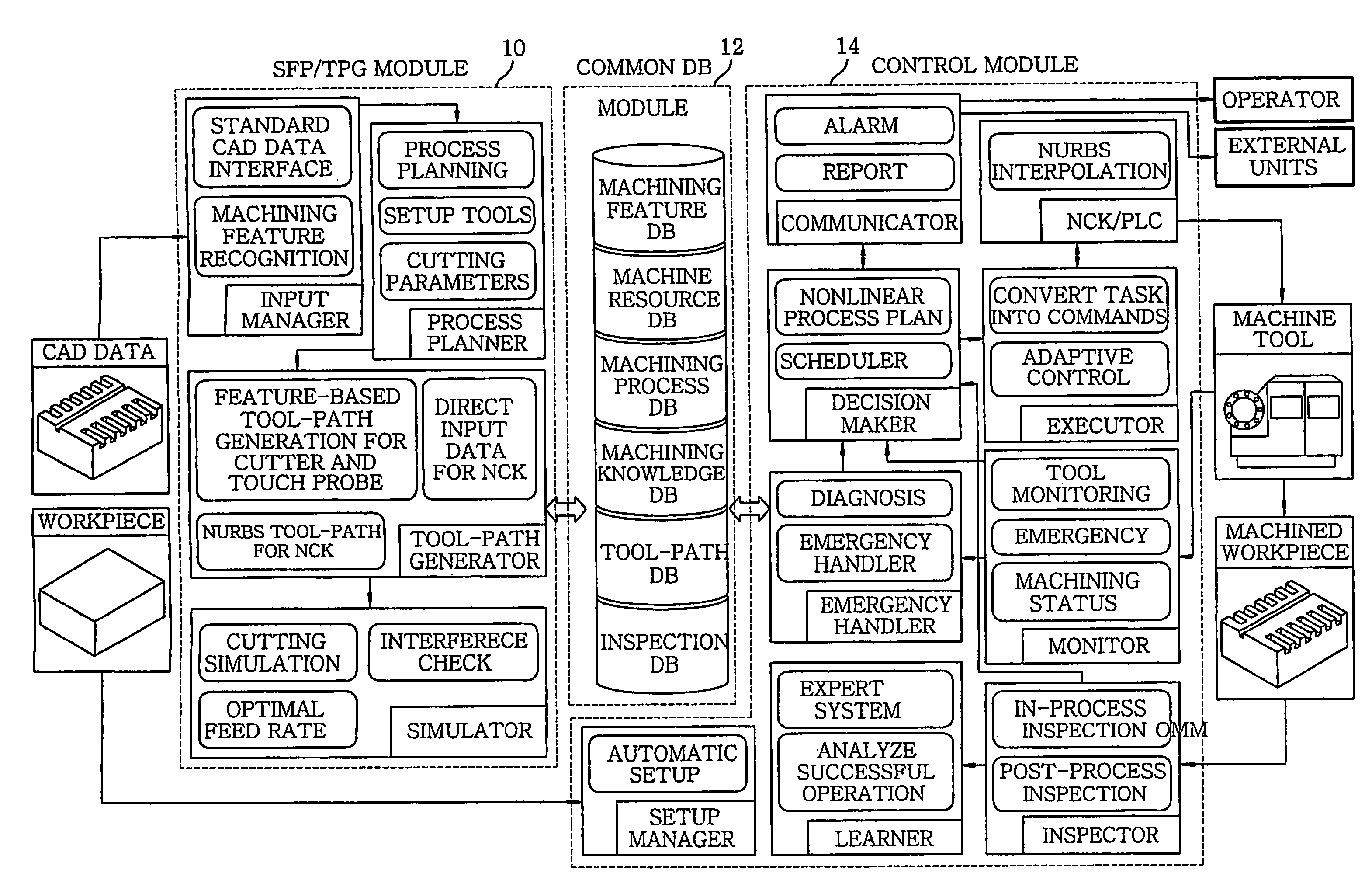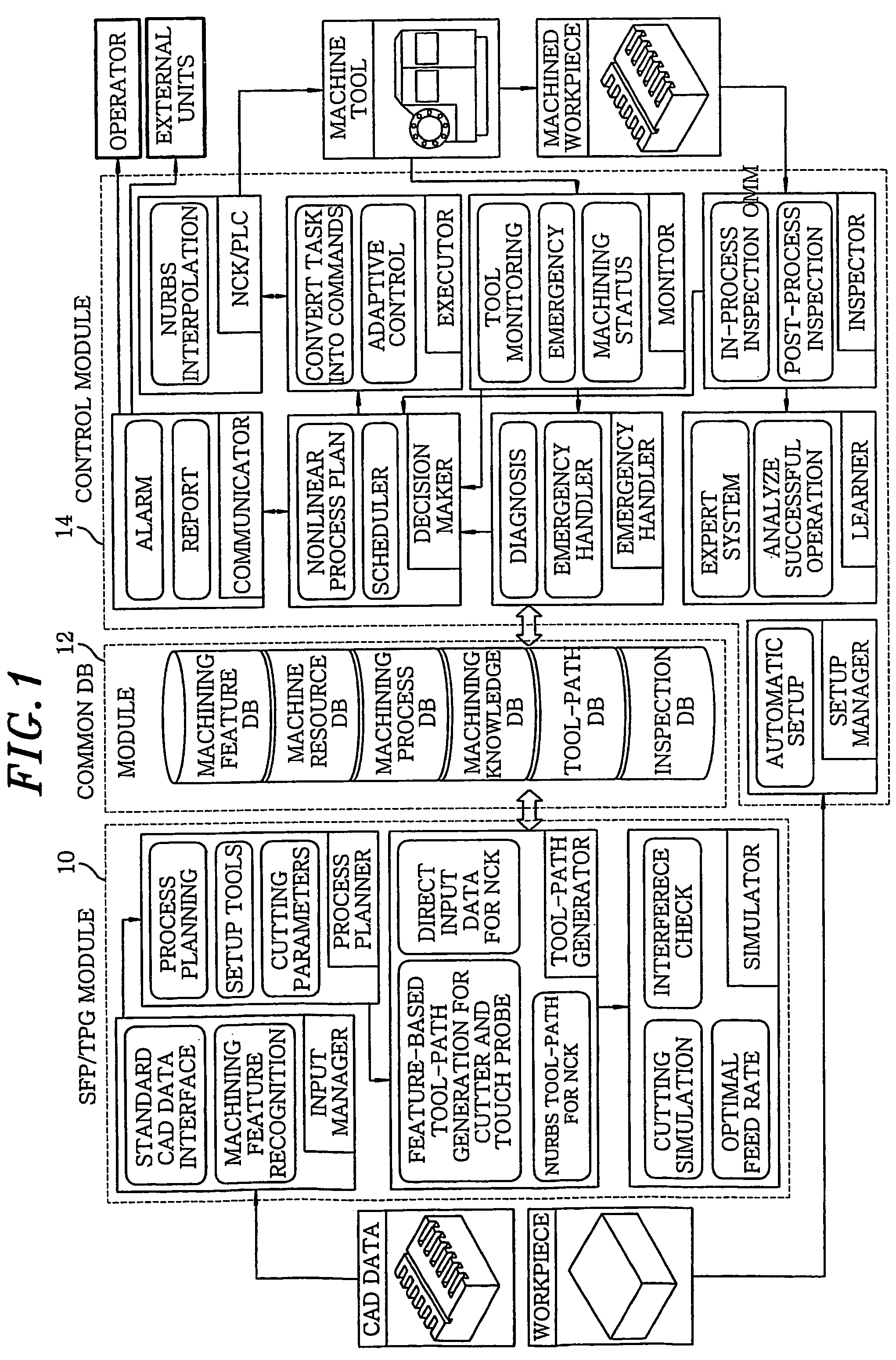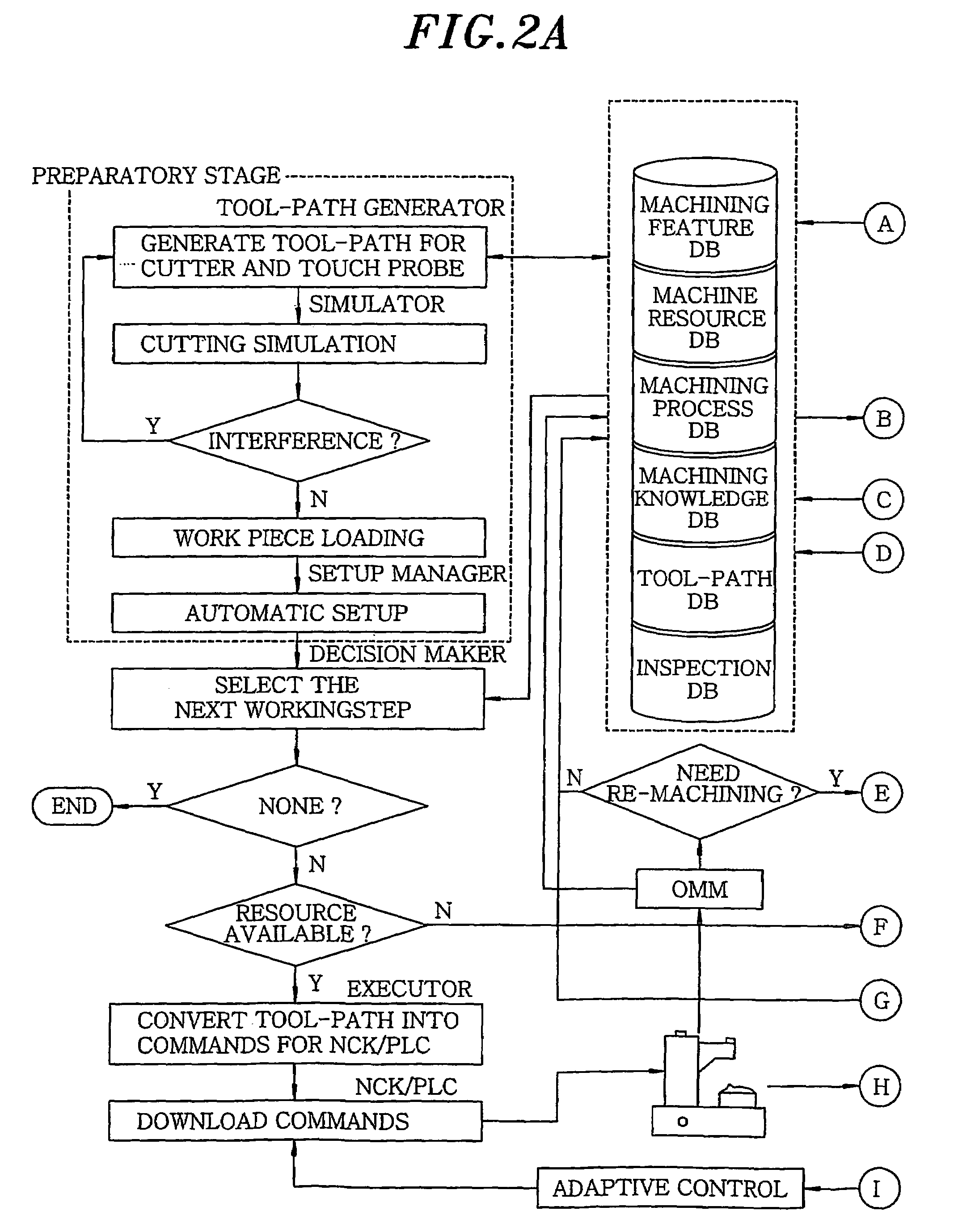Intelligent STEP-NC controller
- Summary
- Abstract
- Description
- Claims
- Application Information
AI Technical Summary
Benefits of technology
Problems solved by technology
Method used
Image
Examples
Embodiment Construction
[0015]Referring to FIG. 1, there is provided a block diagram of an intelligent STEP-NC controller in accordance with a first embodiment of the present invention. The intelligent STEP-NC controller includes a SFP (shop-floor programming) / TPG (tool-path generation) module 10, a common database module 12 and a control module 14.
[0016]The control module 14 reflects functional-level requirements of each of controllers of a machining tool, wherein the controllers constitute the machining tool based on a holonic paradigm including a decision-making, an execution and a monitoring stage.
[0017]The control modules 14 includes a decision maker for managing an intra-task, an executor, a monitor, an emergency handler, a plurality of modules for supporting non-machining functions such as a NCK / PLC (Numerical Control Kernel / Programmable Logic controller), a communicator for managing an inter-task, an inspector, a learner and a setup manager.
[0018]The setup manager within the control module 14 suppo...
PUM
 Login to View More
Login to View More Abstract
Description
Claims
Application Information
 Login to View More
Login to View More - R&D
- Intellectual Property
- Life Sciences
- Materials
- Tech Scout
- Unparalleled Data Quality
- Higher Quality Content
- 60% Fewer Hallucinations
Browse by: Latest US Patents, China's latest patents, Technical Efficacy Thesaurus, Application Domain, Technology Topic, Popular Technical Reports.
© 2025 PatSnap. All rights reserved.Legal|Privacy policy|Modern Slavery Act Transparency Statement|Sitemap|About US| Contact US: help@patsnap.com



